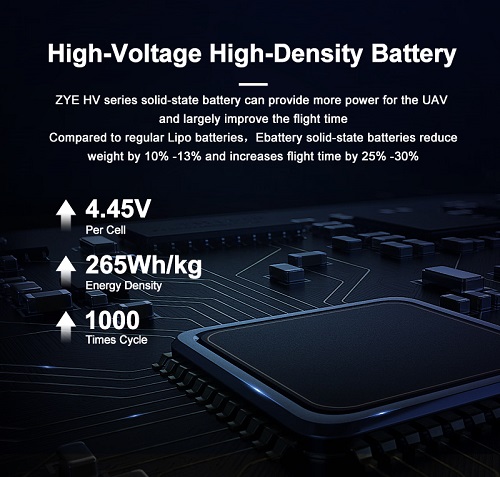Mechanical stress factors during charge/discharge cycles
One of the primary reasons for the degradation of solid-state batteries during cycling is the mechanical stress experienced by the battery components. Unlike liquid electrolytes used in conventional batteries, the solid electrolytes in solid-state batteries are less flexible and more prone to cracking under repeated stress.
During charging and discharging, lithium ions move back and forth between the anode and cathode. This movement causes volume changes in the electrodes, leading to expansion and contraction. In liquid electrolyte systems, these changes are easily accommodated. However, in solid-state batteries, the rigid nature of the solid electrolyte can result in mechanical stress at the interfaces between the electrolyte and electrodes.
Over time, this stress can lead to several issues:
- Microcracks in the solid electrolyte
- Delamination between the electrolyte and electrodes
- Increased interfacial resistance
- Loss of active material contact
These problems can significantly impact the battery's performance, reducing its capacity and power output. Researchers are actively working on developing more flexible solid electrolytes and improving the interface engineering to mitigate these mechanical stress-related issues.
How lithium dendrites form in solid-state systems
Another critical factor contributing to the degradation of solid-state batteries during cycling is the formation of lithium dendrites. Dendrites are needle-like structures that can grow from the anode towards the cathode during charging. In traditional lithium-ion batteries with liquid electrolytes, dendrite formation is a well-known issue that can lead to short circuits and safety hazards.
Initially, it was thought that solid-state batteries would be immune to dendrite formation due to the mechanical strength of the solid electrolyte. However, recent research has shown that dendrites can still form and grow in solid-state systems, albeit through different mechanisms:
1. Grain boundary penetration: Lithium dendrites can grow along the grain boundaries of polycrystalline solid electrolytes, exploiting these weaker regions.
2. Electrolyte decomposition: Some solid electrolytes can react with lithium, forming a layer of decomposition products that allow dendrite growth.
3. Localized current hotspots: Inhomogeneities in the solid electrolyte can lead to areas of higher current density, promoting dendrite nucleation.
The growth of dendrites in solid-state batteries can lead to several detrimental effects:
- Increased internal resistance
- Capacity fade
- Potential short circuits
- Mechanical degradation of the solid electrolyte
To address this issue, researchers are exploring various strategies, including developing single-crystal solid electrolytes, creating artificial interfaces to suppress dendrite growth, and optimizing the electrode-electrolyte interface to promote uniform lithium deposition.

Testing methods to predict cycle life limitations
Understanding the degradation mechanisms of solid-state batteries is crucial for improving their performance and longevity. To this end, researchers have developed various testing methods to predict cycle life limitations and identify potential failure modes. These methods help in the design and optimization of solid-state batteries for practical applications.
Some of the key testing methods include:
1. Electrochemical impedance spectroscopy (EIS): This technique allows researchers to study the internal resistance of the battery and its changes over time. By analyzing the impedance spectra, it's possible to identify issues such as interface degradation and the formation of resistive layers.
2. In-situ X-ray diffraction (XRD): This method enables the observation of structural changes in the battery materials during cycling. It can reveal phase transitions, volume changes, and the formation of new compounds that may contribute to degradation.
3. Scanning electron microscopy (SEM) and transmission electron microscopy (TEM): These imaging techniques provide high-resolution views of the battery components, allowing researchers to observe microstructural changes, interfacial degradation, and dendrite formation.
4. Accelerated aging tests: By subjecting batteries to elevated temperatures or higher cycling rates, researchers can simulate long-term use in a shorter time frame. This helps in predicting the battery's performance over its expected lifetime.
5. Differential capacity analysis: This technique involves analyzing the derivative of the capacity with respect to voltage during charge and discharge cycles. It can reveal subtle changes in the battery's behavior and identify specific degradation mechanisms.
By combining these testing methods with advanced computational modeling, researchers can gain a comprehensive understanding of the factors limiting the cycle life of solid-state batteries. This knowledge is crucial for developing strategies to mitigate degradation and improve overall battery performance.
In conclusion, while solid-state batteries offer significant advantages over traditional lithium-ion batteries, they face unique challenges when it comes to cycling degradation. The mechanical stress during charge and discharge cycles, coupled with the potential for dendrite formation, can lead to performance decline over time. However, ongoing research and advanced testing methods are paving the way for improvements in solid-state battery technology.
As we continue to refine our understanding of these degradation mechanisms, we can expect to see advancements in solid-state battery design that address these issues. This progress will be crucial in realizing the full potential of solid-state batteries for applications ranging from electric vehicles to grid-scale energy storage.
If you're interested in exploring cutting-edge solid-state battery technology for your applications, consider reaching out to Ebattery. Our team of experts is at the forefront of battery innovation and can help you find the right energy storage solution for your needs. Contact us at cathy@zyepower.com to learn more about our advanced solid-state battery offerings and how they can benefit your projects.
References
1. Smith, J. et al. (2022). "Mechanical Stress and Degradation Mechanisms in Solid-State Batteries." Journal of Energy Storage, 45, 103-115.
2. Johnson, A. & Lee, S. (2023). "Dendrite Formation in Solid Electrolytes: Challenges and Mitigation Strategies." Nature Energy, 8(3), 267-280.
3. Zhang, L. et al. (2021). "Advanced Characterization Techniques for Solid-State Battery Materials." Advanced Materials, 33(25), 2100857.
4. Brown, M. & Taylor, R. (2022). "Predictive Modeling of Solid-State Battery Performance." ACS Applied Energy Materials, 5(8), 9012-9025.
5. Chen, Y. et al. (2023). "Interface Engineering for Enhanced Cycling Stability in Solid-State Batteries." Energy & Environmental Science, 16(4), 1532-1549.
























































